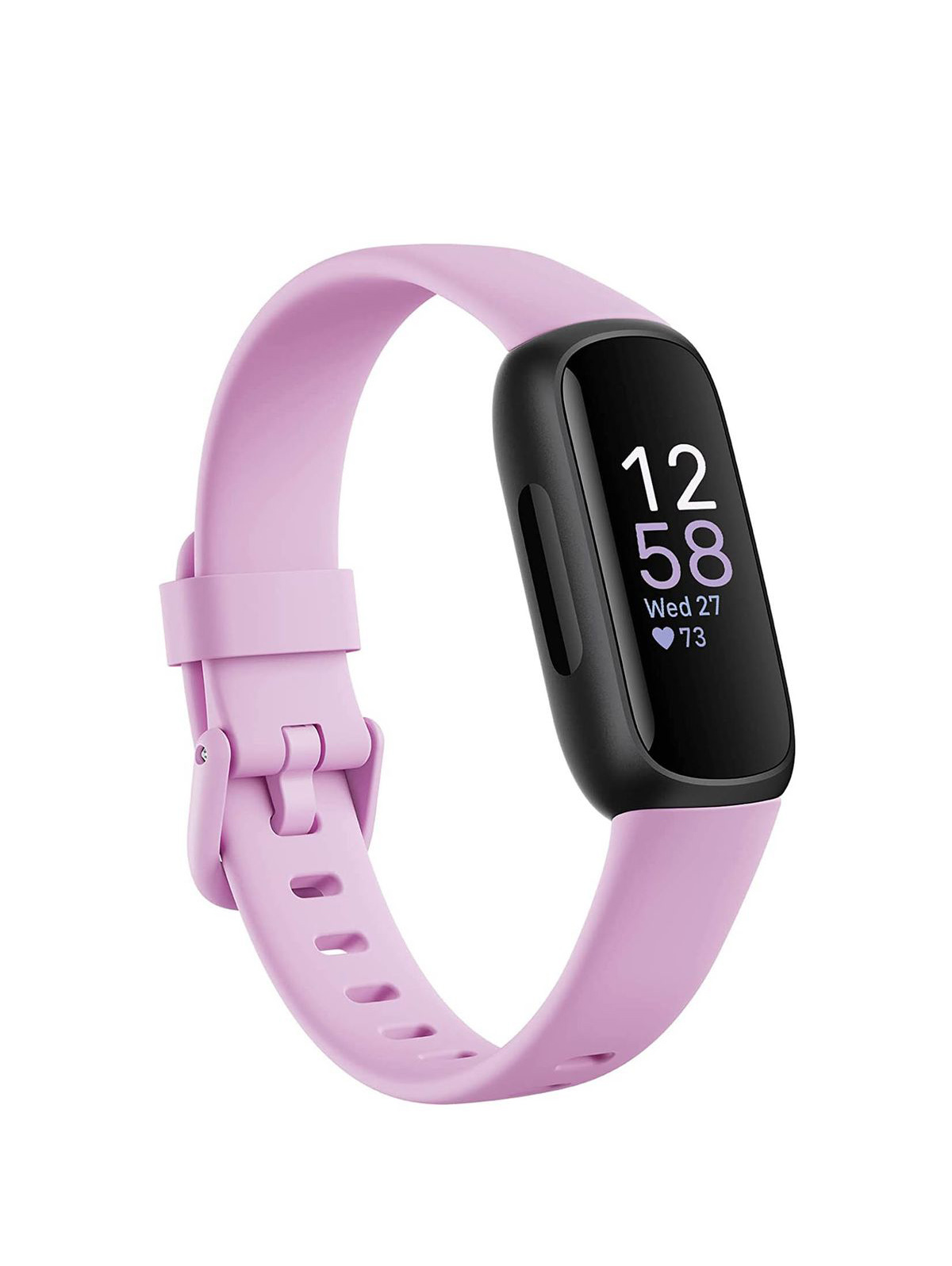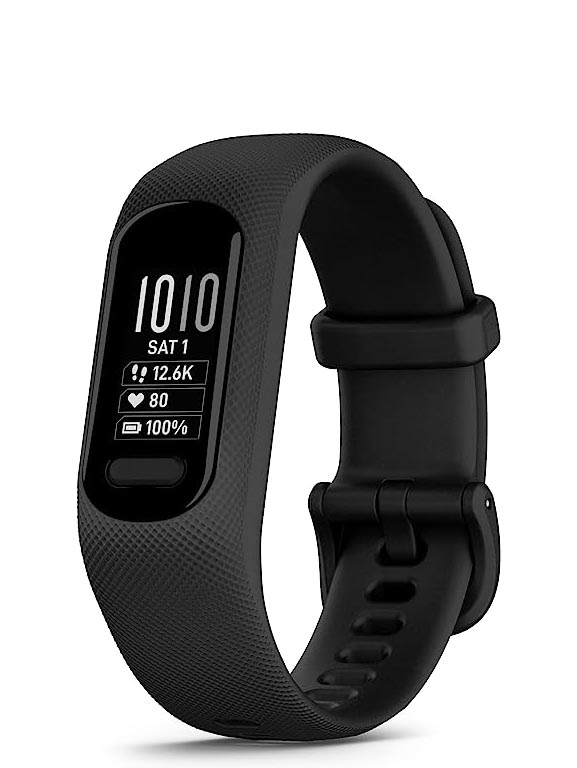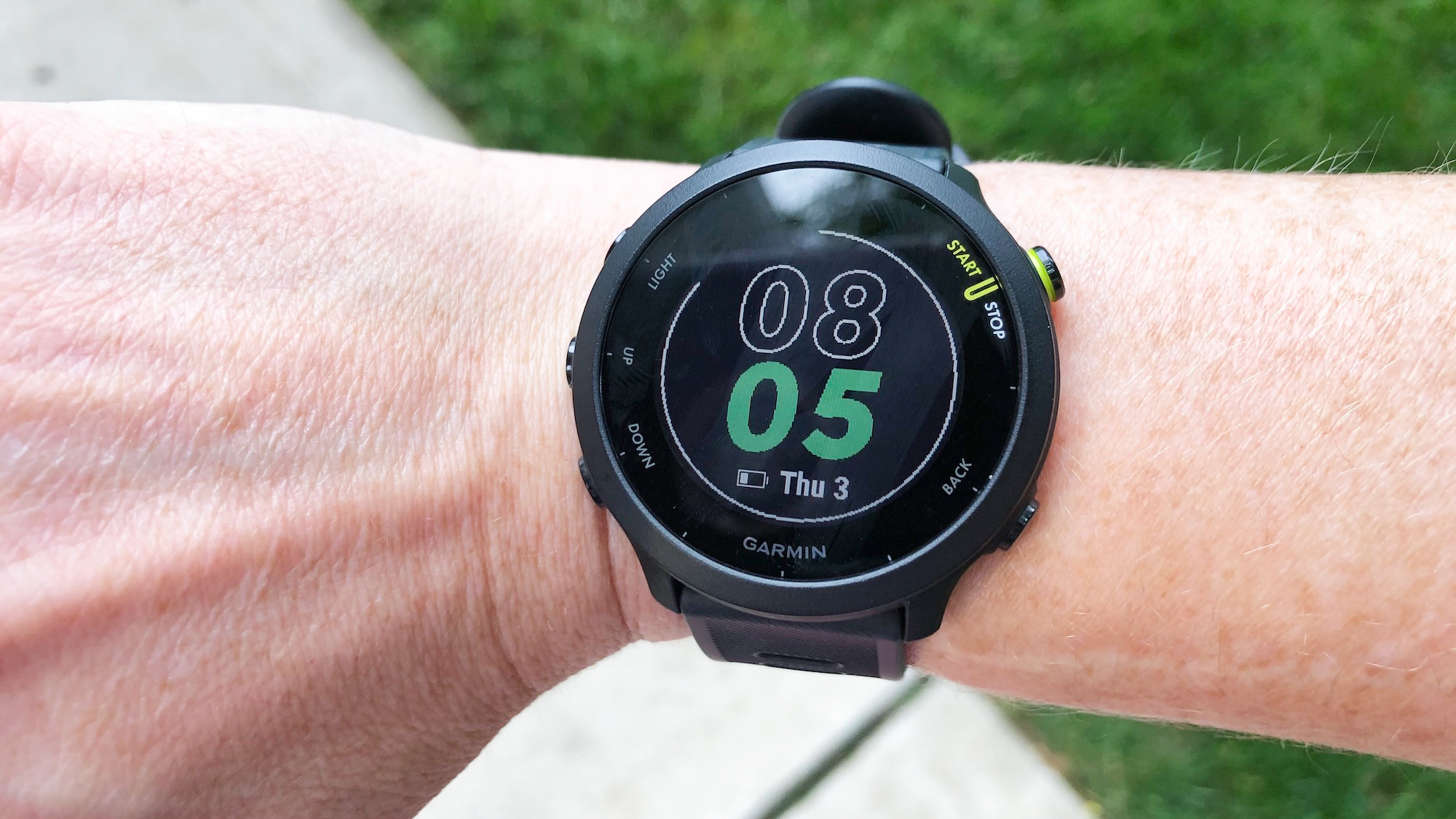I've tested dozens of models — and these are the best cheap fitness trackers in 2025
From Amazfit to Fitbit

The best cheap fitness trackers cost around $100 and keep tabs on everything from sleep to physical activity to overall wellness. Some even offer a small smattering of smart features, like NFC payments and onboard music storage.
My current favorite cheap fitness tracker is the Fitbit Inspire 3, which blends Fitbit's classic design and easy-to-use tools with impressive holistic insights. A close second is the Amazfit Bip 6, an Apple Watch-esque, wallet-friendly fitness tracker with 14 days of battery life and an onboard GPS (unlike the Inspire 3).
But those aren't your only options, as we've rounded up the best cheap fitness trackers to suit a range of activities and budgets. And if these aren't quite hitting the mark, you may also want to check out our selection of the best fitness trackers.
The quick list

The Fitbit Inspire 3 is an attractive and small budget-friendly tracker. For around $100, you’re getting ten days of battery life, a colorful band, a bright screen, and heart rate and sleep monitoring. It's also the comfiest and most discreet tracker in this guide.

The Amazfit Bip 6 combines similar fitness tracking features to the best Fitbits with a design more reminiscent of an Apple Watch SE 3. It also boasts onboard GPS, support for offline maps, up to 14 days of battery, and over 140 workout tracking modes, all for under $100.

The Fitbit Charge 6 ticks all of the boxes when it comes to affordability — though it is $50 more than the Inspire 3, including built-in GPS, a bright screen and plenty of fitness tracking metrics.

Without onboard GPS, the Garmin Vivosmart 5 falls short compared to the Fitbit Charge 6. That said, it gives you all your fitness data for free and is an excellent sleep tracker.

The Amazfit Band 7 is the best cheap fitness tracker under $50 thanks to a light and comfortable design, accurate tracking, solid battery life and an easy-to-navigate user interface.

If you’re serious about tracking your training, spend a little more and get the Garmin Forerunner 55. It offers accurate GPS location tracking and a healthy serving of sleep, workout and recovery tools.
The best cheap fitness trackers you can buy right now
Why you can trust Tom's Guide
Best cheap fitness tracker overall


Specifications
Reasons to buy
Reasons to avoid
The Fitbit Inspire 3 is the best cheap fitness tracker because it nails the basics: heart rate monitoring, accurate workout tracking and logging sleep stages. The fact that it doesn't have a built-in GPS is slightly disappointing, but not surprising at this price.
On the other hand, battery life is excellent. And for just under $100, you'll get Fitbit's Active Zone Minutes metric, 10 days of battery life, touch controls, and, in the biggest update from the Fitbit Inspire 2, a bright, beautiful AMOLED screen.
The Fitbit unit itself is only available in black but is sold in three different band colors — black, lilac, and morning glow. The wristband comes in two sizes: small, and large. During testing, we loved how comfortable and easy-wearing this diminutive tracker was, even at night.
We also appreciated how much more premium the tracker felt with a color screen. It won't be for everyone, but if you're looking for an affordable fitness tracker, you can't go wrong with the Inspire 3.
- Read our full Fitbit Inspire 3 review
Best cheap fitness tracker under $100


Specifications
Reasons to buy
Reasons to avoid
The Amazfit Bip 6 offers a lot of bang for the buck for under $100, including a super bright and saturated AMOLED display that maxes out at 2,000 nits, the same as the latest Apple Watch Series 11, up to 14 days of battery, onboard GPS, support for offline navigational maps, and over 140 workout tracking modes.
The companion Zepp app isn't as refined or easy to navigate as the Fitbit app, but the device records a similar amount of holistic data compared to the best Fitbit models. The Bip 6 also produces fairly detailed sleep reports, and can read your heart rate, blood oxygen levels, and breath rate in one easy measurement.
The Amazfit Bip 6 additionally supports mirrored smartphone notifications and sports an onboard microphone and speaker for taking phone calls from a paired smartphone. Sadly, there's no NFC for mobile payments, and limited support for smart features or third-party apps, despite the Apple Watch-like disposition.
However, if you only care about tracking fitness and overall health, and want a large, easy-to-read screen, this is a fabulous option. Additionally, at just one ounce in weight and with a slightly curved design, it wears incredibly comfortably on even slender wrists.
- Read our full Amazfit Bip 6 review
Best cheap fitness tracker with GPS


Specifications
Reasons to buy
Reasons to avoid
Although the Fitbit Charge 6 is Google's flagship tracker, it's surprisingly affordable. It's a great step-up from the Fitbit Charge 5 too, thanks to the return of a haptic side button, improving on-device navigation and recording workouts.
And this model is one of the first in the range to support other manufacturers equipment, allowing you to connect the Charge 6 as a heart rate tracker on NordicTrack, Peloton, and several other exercise machines.
The Charge 6 isn't only about fitness though. Unlike the Inspire 3, it offers support for Google Maps, YouTube Music and Google Wallet, offering a more smartwatch-like experience. Most excitingly, though, the Charge 6 includes onboard GPS.
This makes it heavier than its more affordable sibling, the Inspire 3, but we didn't find it especially notable on our wrist. The built-in GPS lets you accurately track runs, hikes, bike rides and more, without the need to carry a paired smartphone.
During testing, we were impressed by how comfortable the Charge 6 is around the wrist and how easy it is to read in the bright sunlight. The screen is a bit larger than that found on the Inspire 3 though nowhere near as large as those found on the latest Apple Watches.
Ultimately, if you want a slimline and capable fitness tracker with some useful smartwatch features and are okay with breaking the $100 price barrier, the Fitbit Charge 6 is a total home run.
- Read our full Fitbit Charge 6 review
Best cheap Garmin fitness tracker

Specifications
Reasons to buy
Reasons to avoid
The best Garmin watches are famed for their outdoor tracking, making them a firm favorite for runners and hikers. But Garmin doesn't only make great watches, as the smaller, budget-friendly Vivosmart 5 shows, and it does a lot more than count steps.
It has a monochrome OLED display that's 66% larger than the display on the Vivosmart 4, making it easier to read messages and alerts with text that can scroll across the screen. And you can see at least three stats on the display simultaneously.
The Vivosmart 5 gives you GPS tracking through your phone, blood oxygen monitoring, and continuous heart rate monitoring. Like a lot of Garmin's other wearables, the Vivosmart 5 is pretty good on a sleep-tracking front.
It’s lightweight and comfortable enough to wear when you’re sleeping (compared to the Garmin Fenix 7, it’s quite literally, a dream), and gives you a good picture of your sleep patterns — an insight that Google makes you subscribe to Fitbit Premium for.
Like a lot of the more premium Garmin watches, the watch will also give you a body battery score when you wake up, which is similar to Fitbit's daily readiness score and takes into account your previous day’s activity levels, and your sleep quality.
And unlike Fitbit, Garmin doesn’t put any its premium tracking features behind a paywall. All of Garmin’s data is free of charge and available in the Garmin Connect app, which is intuitive and easy to use.
- Read our full Garmin Vivosmart 5 review
Best cheap fitness tracker under $50


Specifications
Reasons to buy
Reasons to avoid
The Amazfit Band 7 is a $50 fitness tracker that offers many of the headline features found in more premium devices, like those from Fitbit and Garmin, but at a fraction of the price. It can monitor your blood oxygen saturation levels and stress, offers alerts for high heart rates, and perhaps most impressively, has voice support for Amazon Alexa built in.
In our testing, workout and sleep tracking proved reliable and accurate. Battery life is also fantastic, easily lasting two weeks or more on a single charge. The 1.5-inch AMOLED screen is responsive and easy to read in sunlight; however, it is on the smaller side. There's also no GPS, so you will need to carry a phone while you work out for distance and location data. If that bothers you, consider the Amazfit Bip 6 instead.
Best cheap fitness tracker for running


Specifications
Reasons to buy
Reasons to avoid
If you're after a cheap fitness tracker that can double as a running watch, the Garmin Forerunner 55 is an excellent option. Despite costing less than $200, it retains many of Garmin's greatest features, all without an extra subscription.
It can keep tabs on your steps, runs, sleep, and heart rate, and it can even record your routes thanks to the onboard GPS, which means you can also leave your phone at home when you're out on a run — unless you don't mind using running phone holders.
Though if you do keep your phone nearby, you can use Garmin's impressive safety features, like incident detection, which sends your real-time location to your chosen emergency contacts. For features like this, it's vital that the watch doesn't run out of juice, and the Forerunner 55 can last two weeks or up to 20 hours with GPS on.
Like most Garmin running watches, a huge selling point with the Forerunner 55 is that it connects to Garmin's Garmin Connect app, where you get a huge amount of data, for free. You'll also be able to access the Garmin Coach training plans, which you can download onto the watch.
- Read our full Garmin Forerunner 55 review
Best cheap fitness tracker: Features comparison
| Header Cell - Column 0 | Fitbit Inspire 3 | Amazfit Bip 6 | Fitbit Charge 6 | Garmin Vivosmart 5 | Amazfit Band 7 | Garmin Forerunner 55 |
|---|---|---|---|---|---|---|
Price | $99 | $79 | $159 | $149 | $39 | $199 |
Screen size, type | 0.76-inch AMOLED | 1.97-inch AMOLED | 1.4-inch AMOLED | 0.8-inch OLED | 1.5-inch AMOLED | 1.04-inch MIP |
Weight | 0.62 ounces | 1.0 ounces | 1.33 ounces | 0.9 ounces | 1.0 ounce | 1.3 ounces |
Battery life | 10 days | 14 days | 7 days / 5 hours w/ GPS | 7 days | 12 days | 2 weeks / 20 hours w/ GPS |
Onboard GPS | No | Yes | Yes | No | No | Yes |
Water resistance | 50 meters | 50 meters | 50 meters | 50 meters | 50 meters | 50 meters |
NFC payments | No | No | Yes | No | No | No |
Also consider
More smartwatch than fitness tracker, the $99 Amazfit Active 2 is still packed with all the latest and greatest wellness and workout tech the brand has on offer. Plus, it boasts a bright and bold screen, AI voice assistant, onboard GPS and impressive battery life.
Read our full Amazfit Active 2 review
The Samsung Galaxy Fit3 is a relatively new fitness tracker, for the North American market, at least. We're still in the process of reviewing it but already it seems destined for this guide. Though it's Android only, the easy-wearing device stacks up impressively versus the Fitbit Inspire 3. Ultimately, for less than $60, you get a lot of high-end tech, like onboard GPS, NFC, a blood ox sensor and a sizable AMOLED screen.
How to choose the best cheap fitness tracker
All the best cheap fitness trackers monitor the basics, including heart rate, physical activity and sleep, but some offer useful smart features, like NFC payments and/or onboard music storage, too.
If you’re the type of person who likes leaving their phone at home while going for a run/walk/bike ride, then you’ll likely want a tracker with an onboard GPS antenna, like the Amazfit Bip 6 or Fitbit Charge 6.
Design-wise, the best cheap fitness trackers tend to fall into one of two categories: smartwatch-look-alikes or fitness band-style trackers. The Bip 6 and Garmin Forerunner 55 are examples of the former, while the Fitbit Inspire 3, Charge 6 and Garmin Vivosmart 5 are examples of the latter.
When choosing the best cheap fitness tracker, it’s also important to make sure that it will work with your smartphone. Fortunately, all of the models currently in this guide play nicely with both Android and iOS handsets.
How we test the best cheap fitness trackers
We spend a lot of time testing fitness trackers here at Tom’s Guide. To ensure each device is properly put through its paces, we look at five key factors, listed below:
- Fitness tracking accuracy: When tested against a control, does the device’s step-count, distance, and heart rate accuracy fall within a reasonable margin for error? Are wellness metrics consistent across the board during our testing period? The answer to both of these must be yes in order for us to consider a fitness tracker for this guide.
- Battery life: How long does the device last per charge? The best cheap fitness trackers should provide roughly a week or more of battery life to receive our recommendation
- Durability: Does the fitness tracker feel like it’s well-made and will stand up to the wear and tear of daily life? If the answer is now, we’re not recommending it.
- Comfort and design: How does the tracker feel on the wrist when worn day and night? Does it leave a mark or irritate the skin? Is the design aesthetically pleasing?
- Ease-of-use: How difficult is the tracker to set up and pair with a device? Is menu navigation intuitive, and does the tracker automatically detect workouts?
FAQs
Will there be any new Fitbit fitness trackers in 2026?
Yes! According to Google, the owner of Fitbit, we can expect new Fitbit hardware in 2026. With Google ending both the Fitbit Sense and Versa smartwatch lines earlier this year, my best guess is that 2026 will bring about a Fitbit Inspire 4, a Fitbit Charge 7, or both. After all, the Inspire 3 debuted all the way back in 2022, while the Charge 6 launched in 2023.
What's the best Fitbit?
The best Fitbit in 2025 is the Charge 6. Similar in size to the Fitbit Inspire 3, the Fitbit Charge 6 packs onboard GPS and useful smart functions, like support for Google Wallet and Maps. Of course, it's far from your only choice. In fact, some of the best Fitbits in 2025 aren't Fitbits at all. For example, the Garmin Vivoactive 6 is my favorite Fitbit alternative.
Is it worth buying a cheap fitness tracker?
If you're looking to get a better picture of your overall health then yes, a cheap fitness tracker is a decent investment. Most will count your steps, distance traveled, and calories burned, without spending a fortune.
Of course, if you're looking for more advanced metrics, or you're training for a marathon, it might be worth spending a little bit more on a gadget that has built-in GPS and more extensive heart rate monitoring.
Get instant access to breaking news, the hottest reviews, great deals and helpful tips.

Dan Bracaglia is the Tom’s Guide editorial lead for all things smartwatches, fitness trackers and outdoor gear. With 15 years of experience as a consumer technology journalist testing everything from Oura Rings to instant cameras, Dan is deeply passionate about helping readers save money and make informed purchasing decisions. In the past year alone, Dan has assessed major product releases from the likes of Apple, Garmin, Google, Samsung, Polar and many others.
An avid outdoor adventurer, Dan is based in the U.S. Pacific Northwest where he takes advantage of the beautiful surroundings every chance he gets. A lover of kayaking, hiking, swimming, biking, snowboarding and exploring, he also makes every effort to combine his day job with his passions. When not assessing the sleep tracking and heart rate accuracy of the latest tach gadgets, you can find him photographing Seattle’s vibrant underground music community.
- James FrewBuying Guide Editor


